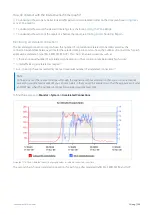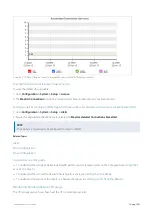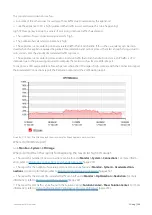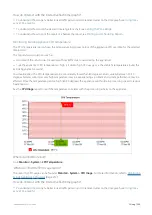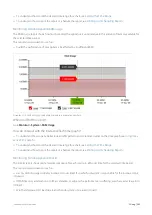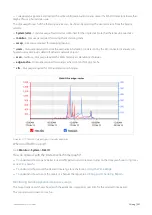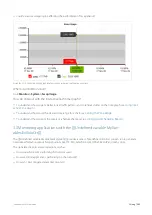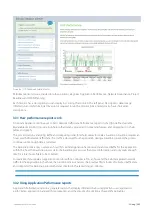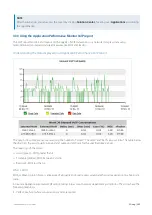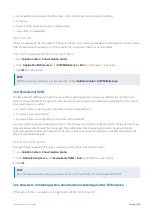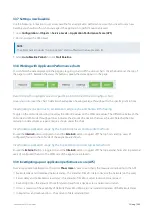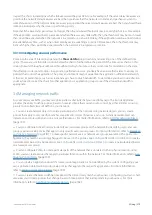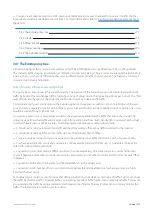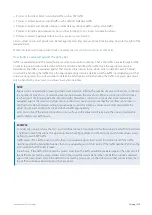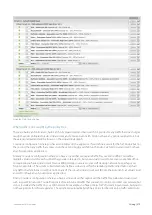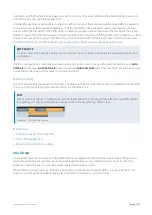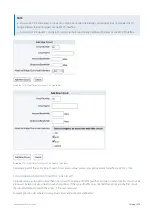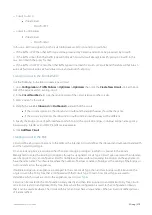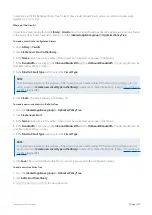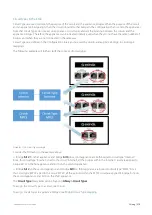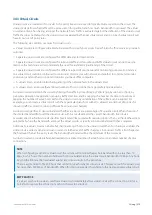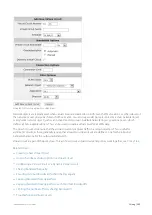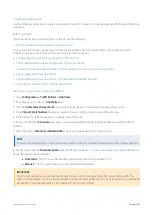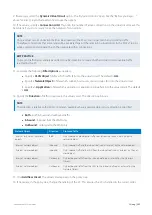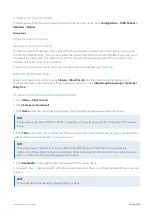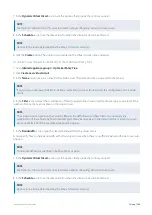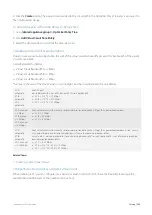
Exinda Network Orchestrator
3 Using
|
270
Inspect the charts to determine which attribute caused the poor APS score. For example, if the server delay measures are
good but the network delay measures are bad, then you know that the network is to blame and perhaps you can do
something about it. If the network delay measures are good but the server delay measures are bad, then you should have
someone investigate why the server is performing poorly.
Note that if the baselining period was not typical, then the calculated thresholds may be overly high or low. For example,
if the application was baselined on a weekend when there was very little traffic, then the thresholds may be much lower
than would be expected when the network is in a typical use scenario. Similarly, if the application was base-lined during
an extremely busy time, such as when most employees are watching an online CEO webcast, then the thresholds may
be much higher than would be expected when the network is in a typical use scenario.
3.3.10 Investigating unusual performance
Zoom into the area of interest by opening the
Show data for
drop-down list and selecting one of the defined time
spans. If necessary, use the slider controls below the chart to further refine the period. All the time series charts on this
screen (inbound throughput, outbound throughput) will synchronize so that you can look for correlations in the data.
If any flat tops correspond to drops in application performance score, you likely have an issue that relates to a policy (or
policies) that control the application. The policy environment may not guarantee the application sufficient bandwidth,
or that less important apps, such as recreational apps, have to much bandwidth. To determine your best course of action
you may need to look at the charts for other applications or application groups to see if the allowed bandwidth is
appropriate.
3.4 Managing network traffic
As you monitor your traffic, you may recognize patterns of activity that you need to manage. The Exinda Appliance
provides the ability to define policies, based on several criteria, that you can use to control, by either limiting or giving
priority to, specified classes of traffic on your network.
You can create network objects to isolate particular parts of the network. Using network objects, you can create
policies that apply to only specific branches, departments, classes of devices, and so on. A static network object can
include one or more subnets and one or more IP addresses.
For more information, refer to
You can configure Active Directory to identify users and user groups on the network. By identifying users and user
groups, you can create policies that apply to only specific users or user groups.
For more information, refer to
To make specific network users or network user groups available to the policy con-
figuration, they must be accordingly flagged to be used in the policies. See
Configure Network User Objects
to create a
network object based on a network user. See
Configure Network User Group Objects
to create a network object based
on a network user group.
You can configure VLANs to isolate particular parts of the network that is unrelated to their physical location. Using
VLANs, you can create policies that apply to particular functions within the network.
For more information, refer to
You an create an application object if a new or custom application is not identified by the system. Configuring your
own application objects allow you to create policies that apply to these specific applications.
You can create schedules to define time periods that more closely match your business. Configuring your own sched-
ules allow you to create policies that change based on time periods that are important to your business.
Summary of Contents for EXNV-10063
Page 369: ...Exinda Network Orchestrator 4 Settings 369 ...
Page 411: ...Exinda Network Orchestrator 4 Settings 411 Screenshot 168 P2P OverflowVirtualCircuit ...
Page 420: ...Exinda Network Orchestrator 4 Settings 420 Screenshot 175 Students OverflowVirtualCircuit ...

